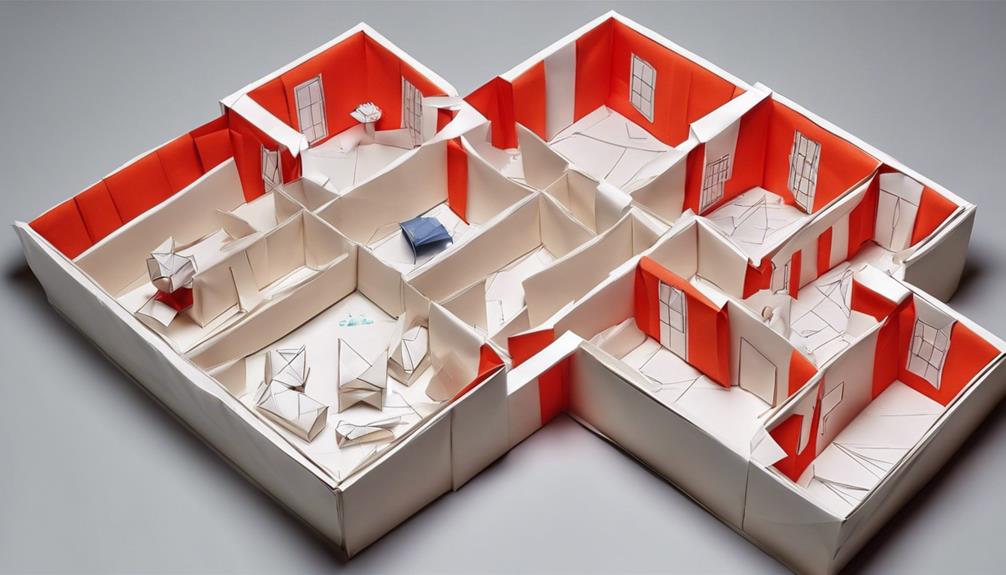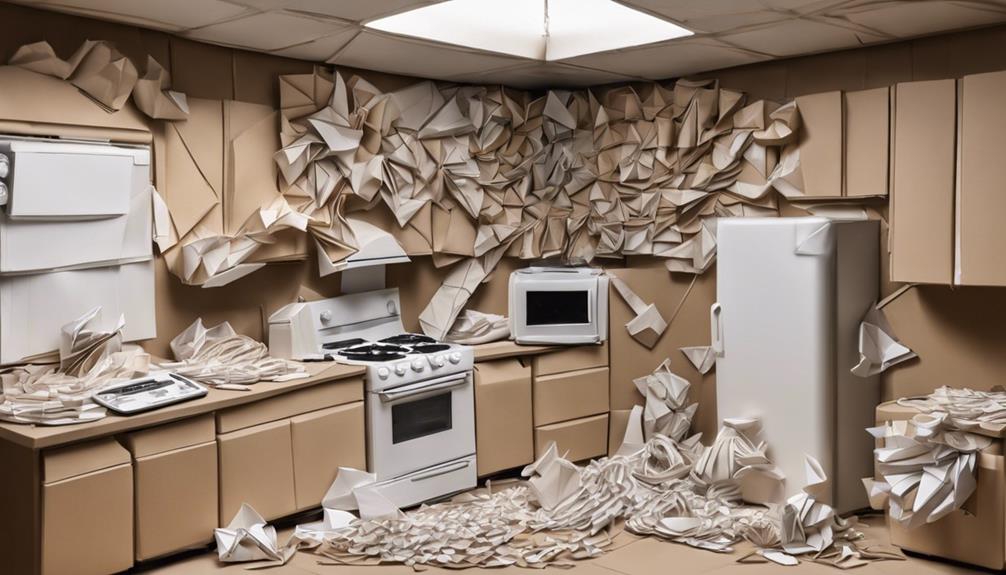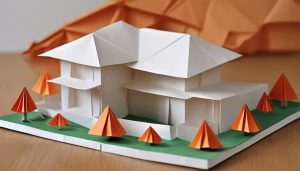In the realm of apartment living, fire safety is akin to a sturdy foundation – essential yet often overlooked. Have you considered the crucial steps to safeguard yourself and your neighbors from the perils of a fire? Understanding the importance of smoke detectors and fire extinguishers is just the beginning. Let's explore the key strategies that can help you navigate the complexities of fire safety in high-rise living spaces.
Importance of Smoke Detectors

Ensuring your apartment is equipped with functioning smoke detectors is crucial for early fire detection and warning. Smoke alarm effectiveness is directly linked to how well-maintained and operational these devices are. Conducting regular fire drills in your apartment can help familiarize everyone with the alarm response and enhance emergency preparedness. In the event of a fire, a properly functioning smoke detector can provide the vital early warning needed to evacuate safely. It is essential to test your smoke alarms monthly and replace the batteries at least once a year to ensure they are working optimally. Additionally, remember to install smoke detectors in key areas like bedrooms, living rooms, and hallways for comprehensive coverage. By taking these proactive steps, you are actively prioritizing the safety and well-being of yourself and your neighbors in the apartment building.
Fire Extinguisher Placement
When it comes to fire extinguisher placement in your apartment, it's crucial to consider ideal locations such as the kitchen, garage, and near bedrooms. Regular maintenance checks are also vital to ensure that your extinguisher is in working condition and ready for any emergency. Be proactive and familiarize yourself with the proper operation of the fire extinguisher to act swiftly in case of a fire.
Ideal Extinguisher Locations
Position fire extinguishers in easily accessible locations throughout your apartment, ensuring that they are visible and reachable in case of an emergency. Place them on walls near exits, in the kitchen, garage, and any other high-risk areas. Mount extinguishers at eye level, so they are easy to spot and grab quickly. Avoid storing them in cabinets or behind furniture. Check the expiration dates regularly and replace any expired extinguishers promptly. Ensure that all household members know where the extinguishers are located and how to operate them by providing proper training. By following these steps, you can enhance the safety of your apartment and be better prepared to handle a fire emergency.
Regular Maintenance Checks
For proper maintenance checks on fire extinguisher placement, regularly inspect the visibility, accessibility, and expiration dates of the extinguishers in your apartment. To ensure your safety in case of a fire emergency, follow maintenance schedules and conduct safety inspections on your fire extinguishers. Here is a table to help you keep track of these vital checks:
| Maintenance Check | What to Inspect | How Often to Check |
|---|---|---|
| Visibility | Ensure the extinguisher is in plain sight | Monthly |
| Accessibility | Confirm easy access in case of a fire | Quarterly |
| Expiration Dates | Check the expiration date and replace if needed | Annually |
Developing an Escape Plan

Creating a detailed escape plan is crucial for ensuring your safety in case of a fire emergency in your apartment. Start by mapping out all possible exit routes from each room, including windows and doors. Practice drills regularly with all household members, so everyone knows what to do in case of a fire. Designate a meeting spot outside the apartment building where everyone should gather after evacuating. Make sure this spot is a safe distance away from the building to avoid any potential hazards.
During the practice drills, time yourself to see how quickly you can evacuate the apartment using different routes. Ensure that everyone knows how to unlock windows and open them easily. If you have pets, include them in your escape plan and assign someone to be responsible for them during an emergency.
Safety Measures in the Kitchen
When cooking in the kitchen, always keep a fire extinguisher within easy reach for immediate access in case of emergencies. Cooking hazards, such as oil splatters or flammable materials near heat sources, can quickly escalate into a fire. To prevent accidents, never leave your cooking unattended, especially when frying or broiling. Keep flammable items like kitchen towels, wooden utensils, and curtains away from the stove. In case of a grease fire, never use water to extinguish it; instead, cover the flames with a metal lid or baking soda. Regularly check that your smoke alarms are working to provide early detection in case of any kitchen mishaps.
When using the oven, always double-check that it is clean and free of any food debris. Accumulated grease can catch fire when the oven is in use. Avoid using aluminum foil to cover the bottom of the oven as it can restrict airflow and lead to overheating. Additionally, ensure there are no flammable items stored in the oven. By following these oven safety measures, you can minimize the risk of kitchen fires and cook with peace of mind.
Electrical Fire Prevention Tips

To ensure the safety of your apartment and prevent electrical fires, it is essential to be mindful of potential hazards and follow proper precautions. When it comes to electrical fire prevention, paying attention to appliance maintenance and cord management can significantly reduce the risks. Here are some tips to help you safeguard your apartment:
- Regularly inspect appliances: Check for any frayed cords, loose plugs, or signs of overheating. Promptly repair or replace any damaged appliances to prevent electrical malfunctions.
- Avoid overloading outlets: Plugging too many devices into one outlet can lead to overheating and potentially cause a fire. Use power strips with built-in surge protection to distribute the electrical load evenly.
- Practice safe cord management: Keep cords away from heat sources, water, or high-traffic areas to prevent damage. Avoid running cords under carpets or rugs where they can overheat.
- Unplug when not in use: When appliances are not in use, unplug them to reduce the risk of electrical fires caused by faulty wiring or power surges.
Understanding Apartment Building Safety Systems
Understanding the safety systems in your apartment building is crucial for ensuring the well-being of all residents and effectively responding to emergencies. Familiarize yourself with the emergency exits on your floor and throughout the building. Take the time to locate these exits so that you can evacuate quickly and safely in case of a fire or other emergencies. Additionally, be aware of the alarm systems in place. Learn what the different alarm sounds indicate and what actions you should take when you hear them.
Emergency exits are strategically placed to provide a safe escape route in various scenarios. Make sure these exits are never blocked and are easily accessible. Alarm systems are designed to alert residents in case of a fire or other emergencies. When you hear the alarm, remain calm, gather your important belongings if time allows, and evacuate following the building's evacuation plan. By understanding and being prepared to act upon these safety systems, you contribute to creating a safer living environment for yourself and your neighbors.
Frequently Asked Questions
How Often Should Smoke Detectors Be Tested and Replaced in an Apartment?
When it comes to keeping your apartment safe, it's essential to regularly check and replace smoke detectors. For optimal safety, it's recommended to test them monthly and change the batteries at least once a year. Additionally, make sure to practice fire drills and review your evacuation plan with everyone in your household. By staying proactive and prepared, you can help ensure the well-being of yourself and your neighbors.
Are There Different Types of Fire Extinguishers Recommended for Different Areas of an Apartment?
When selecting fire extinguishers for your apartment, consider the various types suitable for different areas. For instance, a multipurpose ABC extinguisher is versatile and can handle most fires, while a Class K extinguisher is ideal for kitchen fires. Place extinguishers in key locations like the kitchen, garage, and near bedrooms. Make sure to check the extinguisher's pressure gauge regularly and replace it if damaged or expired to ensure safety equipment placement is effective.
What Should Be Included in an Escape Plan for Apartment Dwellers?
When creating an escape plan for apartment dwellers, make sure to include a detailed fire drill that covers all possible scenarios. Identify emergency exits and establish a safe meeting point outside the building. Practice the escape plan regularly with everyone in the household to ensure everyone knows what to do in case of a fire. Stay calm and focused during the drill to increase the chances of a successful evacuation.
Are There Specific Safety Measures That Should Be Taken in a Multi-Level Apartment Building?
When living in a multi-level apartment building, it's crucial to familiarize yourself with the fire escape routes and building regulations. Knowing the quickest way out in case of a fire emergency can save lives. Make sure all exits are clear and easily accessible. Additionally, following building regulations such as not blocking hallways or stairwells can prevent obstacles during an evacuation. Stay informed and prepared to ensure your safety in any situation.
How Can Apartment Dwellers Prevent Electrical Fires in Their Units?
To prevent electrical fires in your apartment, start by maintaining outlets and ensuring they're not overloaded. Use fireproofing materials around potential hazards. Practice appliance safety by not leaving them unattended and keeping flammable items away. Manage cords properly, avoiding tangles or pinching. Regularly check for frayed wires and replace damaged cords immediately. Taking these precautions will help keep your unit safe from electrical fires.



